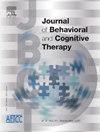通过数字技术更健康和更早:迈向青春期饮食和睡眠障碍的跨诊断分期模型(S.A.N.A.):一项研究方案
IF 1.6
Q3 PSYCHIATRY
引用次数: 0
摘要
背景:饮食和失眠障碍(E&IDs)在青少年中很普遍,而且经常是合并症。对它们共存的一种可能解释是,它们有一些共同的维持机制,如增加的负面影响、功能损伤和对疾病相关刺激的反应性。这项纵向研究将确定E&; id的常见和特殊风险因素,并将采用虚拟现实技术来测试对疾病相关刺激的反应性增加是否会区分有风险或有临床症状的个体与健康同龄人。另一个目的是测试虚拟现实暴露对疾病相关刺激的目标焦虑的可行性。方法至少850名青少年(14-17岁)将完成基线评估和两次随访(分别在3个月和6-9个月),以及通过移动应用程序进行为期4天的生态瞬时评估。高风险或具有E&; id临床症状的个体和健康同龄人将在实验室环境中暴露于虚拟现实(VR)环境中,包括睡眠或饮食相关刺激。有风险或有临床症状的个体也将被邀请通过虚拟现实进行为期一周的自我指导、自动化暴露干预。结果确定预测前驱期到临床期转变的变量。将虚拟现实暴露于与疾病相关的刺激下,作为识别和纠正饮食和睡眠相关困难的潜在工具进行测试。结论本项目解决了有心理健康问题的青少年需要更早、更好、更容易获得的干预措施。其影响包括科学和临床知识的进步,患者和家庭的利益,以及促进技术创新。本文章由计算机程序翻译,如有差异,请以英文原文为准。
Healthier and earlier through digital technology: Towards a transdiagnostic staging model of eating and sleep disorders in adolescence (S.A.N.A.): A study protocol
Background
Eating and insomnia disorders (E&IDs) are prevalent and often comorbid among adolescents. A possible explanation for their co-existence is that they share some common maintaining mechanisms, such as increased negative affect, functional impairment, and reactivity to disease-related stimuli. This longitudinal study will identify common and specific risk factors for E&IDs and will employ virtual reality to test whether increased reactivity to disease-related stimuli discriminates between individuals at risk or with clinical symptoms and healthy peers. An additional aim is to test the feasibility of virtual reality exposure to target anxiety towards disease-related stimuli.
Methods
At least 850 adolescents (14–17 years) will complete a baseline assessment and two follow-ups (at 3 and 6–9 months), along with a 4-day ecological momentary assessment via a mobile app. Individuals at high-risk or with clinical symptoms of E&IDs and healthy peers will be exposed to a virtual reality (VR) environment including sleep or eating-related stimuli in a laboratory setting. Individuals at risk or with clinical symptoms will also be invited to use a self-directed, automatised exposure intervention for a week through VR.
Results
Variables predicting the transition from prodromal to clinical stages of E&IDs will be identified. Virtual reality exposure to disease-related stimuli will be tested as a potential tool to identify and remediate eating and sleep-related difficulties.
Conclusion
This project addresses the need for earlier, better, and more accessible interventions for young people with mental health issues. The implications include the advancement of scientific and clinical knowledge, benefits for patients and families, and the promotion of technological innovation.
求助全文
通过发布文献求助,成功后即可免费获取论文全文。
去求助
来源期刊

Journal of Behavioral and Cognitive Therapy
Psychology-Clinical Psychology
CiteScore
3.30
自引率
0.00%
发文量
38
审稿时长
60 days
 求助内容:
求助内容: 应助结果提醒方式:
应助结果提醒方式:


